
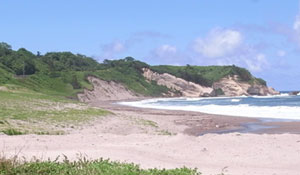
|
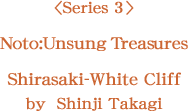 |
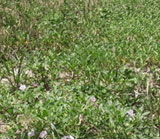 |
Leaving Wajima in an easterly direction on Route 249 with the sight of Nanatsu Island some way offshore to the left, presently we come to the well-known terraced paddies called Senmaida. Then before long we find ourselves in Habune-machi, a small community, which is famous for its Gojinjyo-daiko drum. It is from here that we get our first glimpse of the white cliff face of Shirasaki. Up until this point the scenery along the coast is colorful and interesting whatever the season. Then just as the road curves to the right the Shirasaki promontory and the Japan Sea fill our field of view. This stretch of the coastline has been one of my favorite pieces of largely unspoiled scenery ever since my childhood. The Noto Peninsular has a mostly mountainous terrain and the tree-covered mountains run steeply down to the sea. Here at Shirasaki at least a wall of rock exposes a light colored sheer face of stratum, which refuses to be overcome by the luxuriant verdure seen elsewhere. There is, however, a green topping and this white promontory jutting out into the Japan Sea has an unassuming air of the exotic about it, being somehow impressionistic in nature. |
 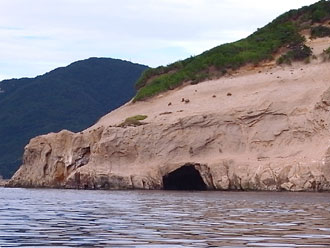 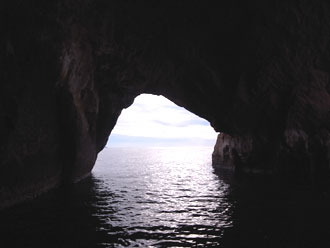 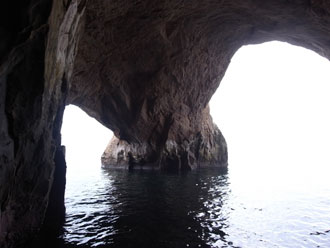 |
When I was at high-school, I came across a painting of a rugged piece of craggy coast in an art book in the school library. The painting reminded me very much of Shirasaki, so that I felt I knew it well. The painting in question was the Etretat Cliffs after the Storm by the French artist Gustave Courbet (1819-1877). There were other equally evocative paintings by the Impressionist painter Monet. Although the western side of this promontory jutting out into the Japan Sea has been eroded by the waves and driving snow storms, on the eastern side the scene is more placid with a few small fishing huts still in place and a sandy beach running on to Sosogi. Called Ohkawa no Hama, it seems that historically there were salt pans here. At the end of the promontory itself there is a wide opening which continues inland into a deep cave. Home to a large number of bats, it is called Yoshitsune no Funa-kakushi. Perhaps because this cave is so deep there are a number of legends surrounding it. One of them speaks of how squid from the sea found their way into the Ikari pond some considerable distance inland in the village of Yamada (Noto-cho) close to the mountains. Another story relates how a shamoji or paddle for serving rice was washed down from the same pond into the cave. Along with the calm placid scenery here, it is fables such as these that draw us into a world of wonder, beyond the bounds of time and space. The truth is somewhat different, however. The pine thickets on Shirasaki have been badly ravaged by pine beetles and the number of trees has decreased considerably. Unknowingly the natural landscape of Noto as well as the lives of its people are changing beyond recognition. Shinji Takagi---Architect Born in Wajima in 1942. Worked on many projects using local materials and true lacquer for shops, houses and a variety of interior design schemes. Principal work includes Yuyado Sakamoto in Suzu: the repair and renovation of the true lacquer craftsman’s house, Nurishi no Ie in Wajima: Meiso no Yakata in Toga, Toyama prefecture: the store Kombuya Shirai in Nanao and Kanazawa: a store selling Japanese candles, Takazawa Shoten in Nanao. Member on the Wajima City Council for the Protection of Cultural Properties Committee. Director of the NPO, Ishikawa Reed Thatch Culture Study Group. Bill Tingey---Translator Chief Designer to David Hicks in London before moving to Japan in 1976 and gaining a Masters Degree in History of Architecture. Worked in Japan as a photographer, designer, writer and translator. Returned to UK to continue work in 2000. |
| (2014/9/3 yuko yokoyama) |
|
(C)Copyright 2004 Jomon-sha Inc, All rights reserved. |